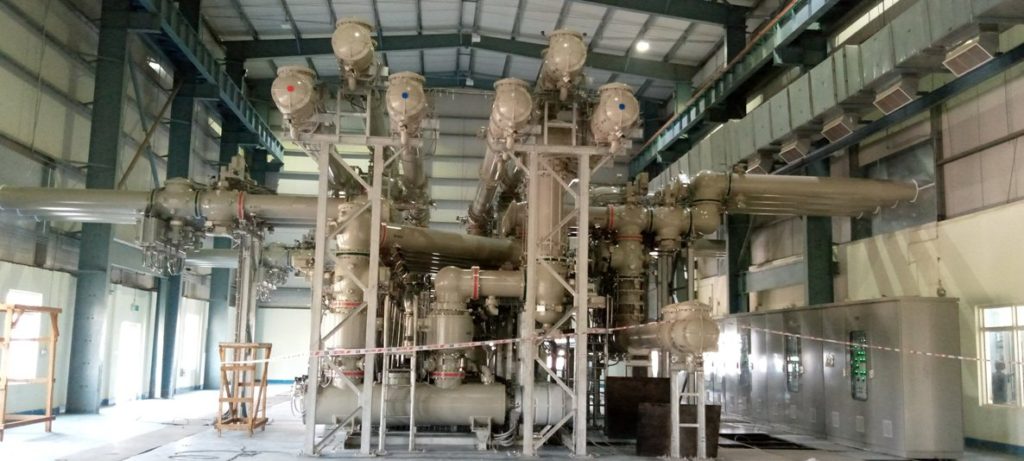The pace of addition of transformation capacity (substations) in the current year, FY21, has been remarkably sluggish.
As against the target of 58,730 MVA for the period April 2020 to January 2021, actual addition was only 33,120 MVA, implying target achievement of a mere 56.4 percent.
Given this, the target for the whole of FY21 (April 2020 to March 2021), at 63,050 MVA, indeed appears formidable.
| Substation Capacity Addition (MVA) | |||
| FY20* | FY21 (Apr-Jan) | ||
| Actual | Actual | Planned | |
| Central | 30,975 | 10,125 | 19,870 |
| State | 32,255 | 19,735 | 35,650 |
| Private/JV | 5,000 | 3,260 | 3,210 |
| Total | 68,230 | 33,120 | 58,730 |
| *April to March | |||
Ownership performance
Central PSUs like Power Grid Corporation of India Ltd (PGCIL) and Damodar Valley Corporation (DVC) could meet only 51 percent of the planned addition in the April-January period of FY21. This ownership group added 10,125 MVA of substation capacity as against the planned 19,870 MVA.
State power transmission utilities did relatively better but were poor performers in the absolute sense. STUs could commission 19,735 MVA of new transformation capacity, 55.4 percent of the targeted 35,650 MVA.
Private entities (including public-private joint ventures) were in refreshing contrast. This ownership class could add 3,260 MVA of new substation capacity, which actually exceeded the planned 3,210 MVA.
Performance in FY20
India’s performance in terms of transformation capacity addition was exceptionally superior in FY20. In that year, as much as 68,320 MVA of new capacity was added. This has been the highest in any year, in recent history at least. Nearly half of this capacity (around 48 percent) was added by state transmission utilities.
The changing kV regime
As of end-January 2021, India’s cumulative transformation capacity stood at 1,001,013 MVA (just over 1 million MVA). Since March 2017 (the end of the XII Plan period), this has grown by 35 percent. What is interesting to note is the growing share of EHV substations. In March 2017, substations of 765kV rating accounted for 22.6 percent of the total transformation capacity. This has risen to 23.5 percent as of January 2021. Similarly, the share of 400kV substations rose from 32.5 percent in March 2017 to 35 percent in January 2021.
Also read: PGCIL’s Capitalization Outpaces Capex In FY21
HVDC substations (of 800kV) ratings have more than doubled from 6,000 MVA in March 2017 to 13,500 MVA in January 2021. Correspondingly, their share in total substation capacity has risen from 0.8 percent to 1.3 percent. However, during the period March 2017 to January 2021, there has been no addition of 500kV HVDC lines or substations. Transformation capacity based on this rating remained unchanged at 13,500 MVA.
The increasing share of substations of 400kV or higher rating has resulted in a correspondingly lower share of 220kV substations. In March 2017, transformation capacity based on 220kV-rated substations had a share of 42.2 percent in the country’s total substation capacity. This dropped to 38.8 percent, as of January 2021. Just for a frame of reference, in March 2012, as much as 71 percent of India’s total transformation capacity came from 220kV substations.

